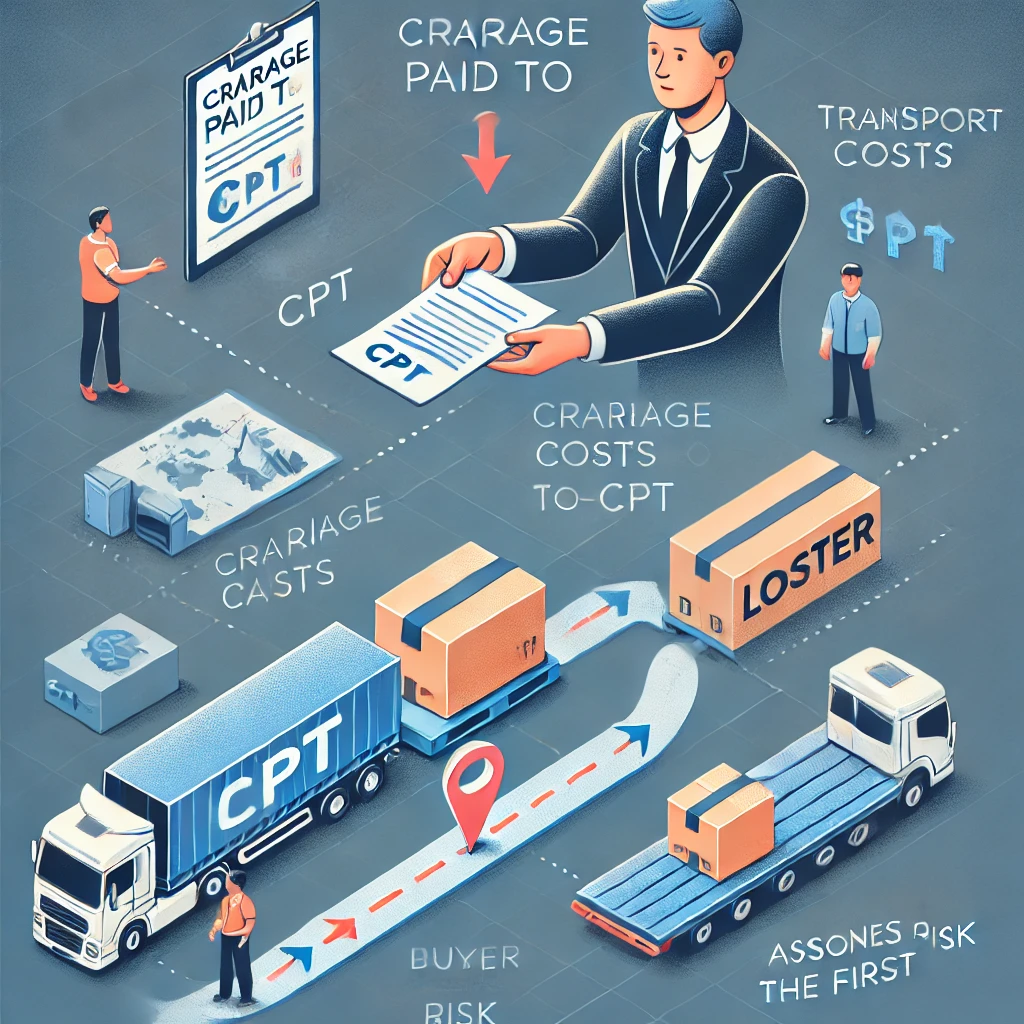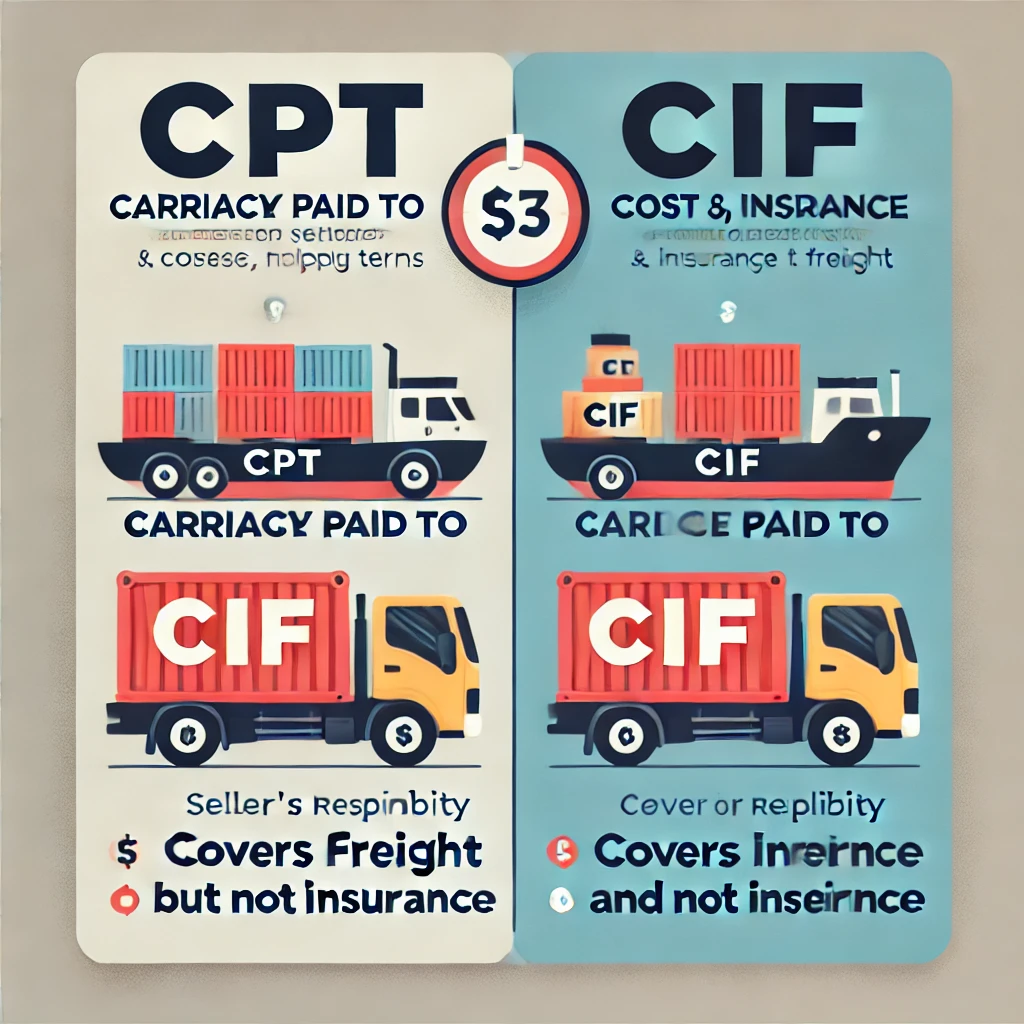Breaking Down C.P.T. Meaning

What Is CPT (Carriage Paid To)?
CPT (Carriage Paid To) is an Incoterm where the seller is responsible for arranging and paying for transportation to a specified destination. However, the risk transfers to the buyer as soon as the goods are handed over to the first carrier.
Key Responsibilities Under CPT
Party | Responsibilities |
Seller | Pays for transportation to the agreed destination, arranges shipping, and handles export clearance. |
Buyer | Assumes risk once the goods are delivered to the first carrier and manages import duties and further transportation. |

Key Features of CPT (Carriage Paid To)
- Seller Covers Freight Costs
- The seller pays for the cost of transportation to the agreed delivery point.
- The buyer does not need to arrange freight, reducing logistical complexity.
- Risk Transfers to Buyer at First Carrier
- Even though the seller pays for transportation, the buyer assumes risk as soon as the goods are handed over to the carrier.
- This can lead to confusion if damage occurs during transit.
- Used for Various Transportation Modes
- CPT applies to all types of transport, including road, rail, air, and sea.
- Buyer Handles Import Duties
- The buyer is responsible for import clearance, duties, and additional transportation beyond the agreed point.
Practical Uses of CPT (Carriage Paid To)
1. International Trade Agreements
CPT is commonly used in global trade contracts, where sellers want to handle the shipping process but not the risks.
2. Multimodal Shipments
For goods that require multiple transportation modes (e.g., trucks to a port, then a ship), CPT allows sellers to arrange freight while transferring risk early.
3. Exporting Goods Efficiently
Businesses exporting products often use CPT to provide cost-inclusive shipping options to customers while limiting their own risks.
4. Air Freight and Express Shipping
CPT is frequently used in air freight and express deliveries, where quick transfers to airlines or couriers are necessary.

Advantages and Disadvantages of CPT
Advantages | Disadvantages |
Lower logistics burden for buyers – The seller arranges and pays for transportation. | Risk transfers early – The buyer assumes risk once the goods reach the first carrier. |
Applicable to all transport modes – CPT can be used for air, sea, road, and rail. | Insurance is not included – The seller is not required to provide insurance unless agreed upon. |
Clear cost division – Buyers know that freight is covered up to the specified point. | Import duties and last-mile delivery are the buyer’s responsibility. |
CPT vs. Other Incoterms
Incoterm | Seller’s Responsibility | Buyer’s Responsibility |
CPT (Carriage Paid To) | Pays for transportation to the agreed destination. | Assumes risk at the first carrier and handles import duties. |
CIP (Carriage and Insurance Paid To) | Pays for transport and insurance. | Assumes risk at the first carrier. |
EXW (Ex Works) | Only makes goods available at the seller’s location. | Handles full logistics and risk. |
FOB (Free on Board) | Loads goods onto a ship at the departure port. | Takes over risk once the goods are on board. |

When to Use CPT?
- Best for exporters who want to offer a shipping-inclusive price but avoid full responsibility.
- Useful for buyers with logistics experience who can handle risk and customs.
- Ideal for multimodal transportation, where goods change carriers during transit.
- Not recommended for buyers who want more control over freight.
Conclusion
CPT (Carriage Paid To) is an effective Incoterm for transactions where the seller pays for transportation but transfers risk early to the buyer. It is commonly used in international trade, air freight, and multimodal shipping.
Understanding CPT and comparing it with other Incoterms is essential for businesses looking to manage shipping costs efficiently while balancing risks. Whether you are a buyer or seller, knowing the responsibilities and applications of CPT will help you optimize logistics operations and reduce unnecessary expenses.
